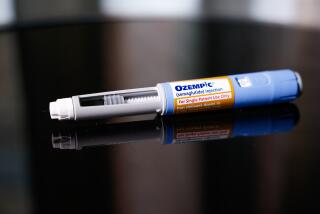Sugar: The toxicity question and what to do about it
This post has been corrected. Please see note at bottom for details.
Sugar is toxic, argues a recent incendiary article that, as could be expected, has drawn attention from health experts, journalists and the people who really count – those who eat.
Not only does ordinary sugar (technically a glucose-fructose combo) add extra calories to our diet, writes Gary Taubes in the New York Times Magazine article “Is Sugar Toxic?” but its consumption is an independent risk factor for heart disease, high blood pressure and many common cancers.
The liver, according to Taubes, is where sugar’s damage begins. He writes: “In animals, or at least in laboratory rats and mice, it’s clear that if the fructose hits the liver in sufficient quantity and with sufficient speed, the liver will convert much of it to fat. This apparently induces a condition known as insulin resistance, which is now considered the fundamental problem in obesity, and the underlying defect in heart disease and in the type of diabetes, type 2, that is common to obese and overweight individuals. It might also be the underlying defect in many cancers.”
To make sense of the analysis, we talked to Dr. Gerard Mullin, director of integrative gastrointestinal nutrition services at Johns Hopkins Hospital in Baltimore. Mullin is board certified in gastroenterology and nutrition, and he studies -- among other things -- how nutrition affects the liver.
In this edited transcript, based on phone and email conversations, he tried to put the research and the fears of sugar into perspective.
Let it be noted that Mullin said he agrees with the rebuttal by nutrition expert and internist Dr. David Katz on the Huffington Post. They say, in essence, that sugar found in fruit is good, can be eaten in reasonable portions, and one should hold on to common sense when considering abandoning all sugar.
You’ve seen the headlines—is sugar toxic?
There are two opposite ends of the spectrum here. Is sugar intrinsically evil? I guess if you use the word “glucose,” which is what feeds our brains, sugar certainly isn’t evil. It’s what we need. It’s probably not in and of itself evil.
But the way high-fructose corn syrup is overused in beverages, that certainly can lead to health issues—when they’re overconsumed. Drinking a Snapple will spike insulin, and that’s what’s going to get you in trouble.
That’s the most sane way of looking at the situation.
But Taubes’ article seems to say that it’s not just high-fructose corn syrup we need to worry about, it’s all sugar. So can sugar that isn’t high-fructose corn syrup be toxic?
Glucose is what we need to live on; table sugar is sucrose (glucose plus fructose). All processed sugars can he harmful in excess quantities. In the liquid form, they can raise insulin levels and fat accumulation. So in part, Taubes is correct—all processed sugars have the potential to be harmful.
We know that eating too much sugar makes us fat. What other harms have scientists found recently?
There is an epidemic of fatty liver in this country.
There’s now abundant data linking overconsumption of sweets and high-fructose corn syrup to fatty liver. But it depends how you use the word “sugar.” If you overconsume sweets, including fructose, that can be hazardous to your health.
[Fatty liver can lead to cirrhosis, liver failure, or liver cancer.]
OK. But how do I deal in the grocery aisles if I don’t want diet soda?
For consumers, it’s a conundrum. What do I do? I have Stevia [an artificial sweetener made from a plant in the sunflower family] in my office. If it were me (and I’m not the average person), I’d get something unsweetened and sweeten it myself with something I believe is safe. No one has shown Stevia to be unsafe. I think, though, that the risk of having things that are oversweet are pretty clear, especially when they are liquids. There’s no question they are hazardous.
How else can I cut more sugar out of my diet?
You can look at labels and see how much sugar and calories are in them. Some things are more sweet than others.
Any other tricks?
Maybe when you have liquids, have some solids with it so it absorbs less quickly. For the people who go to Starbucks to get a Frappucino -- at least if they have cream, that’s going to slow down the digestion and sugar gets into the bloodstream less quickly.
Fiber is going to delay release into the blood system too.
Let’s say I want chocolate—dark chocolate—to satisfy my sweet tooth. I wouldn’t have it by itself, I would have it after a meal so it doesn’t spike your blood sugar.
We all have sweet tooths. How do we satisfy it? You can time with meals and be savvy about what you’re picking.
For the record, 10:30 a.m. April 20: An earlier version of this post inaccurately said that high-fructose corn syrup is pure fructose. But high-fructose corn syrup, like common table sugar, is a mix of glucose and fructose. It does have a slightly different ratio, typically available as 55% fructose and 45% glucose. Here’s a good explainer about the sweetener and the concern about it.
More to Read
Sign up for The Wild
We’ll help you find the best places to hike, bike and run, as well as the perfect silent spots for meditation and yoga.
You may occasionally receive promotional content from the Los Angeles Times.










